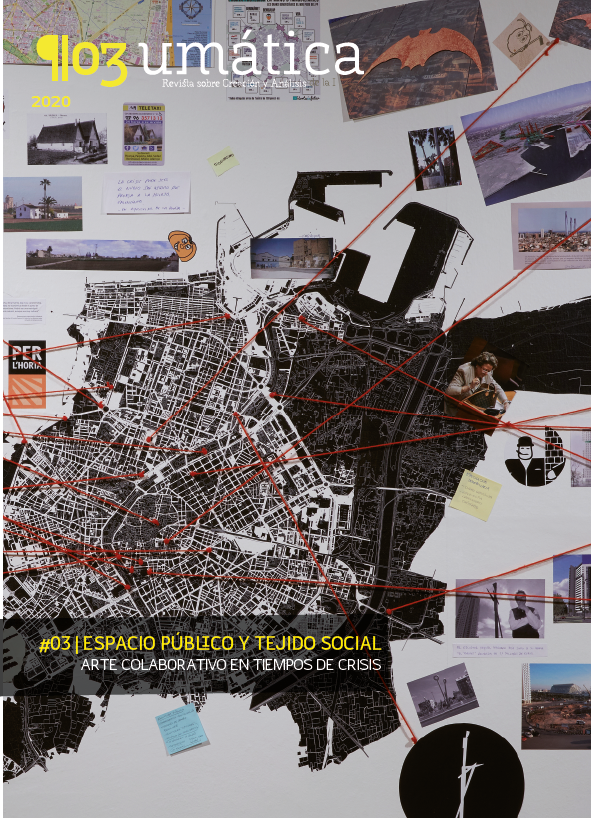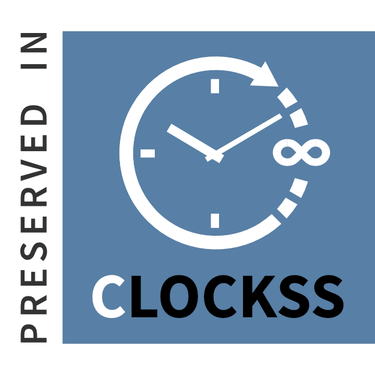Available spaces I.
Liminality and linguistic hybridity in expanded field sculpture.
DOI:
https://doi.org/10.24310/Umatica.2020.v2i3.11189Keywords:
Liminality, Contemporary Art, Photoluminocinetism, Sculpture, hybridisationAbstract
This photographic series or photo-essay is the result of the research project La escultura como interfaz histórico de luz sólida of the Plan Propio of the University of Málaga, which consists of experimental artistic research based on the language of sculpture and its hybridisations with other disciplines, such as photography. To do this I have used methodological tools such as site-specific intervention, Photolumino-kinetics and the possibilities that expanded field sculpture offers in terms of the narratives that the significant object of the chosen environment can offer to what happens in it.
Photolumino-kinetics is a hybridisation between sculptural and photographic language, it is the theoretical corpus of my main thesis Photography as a medium for sculpture in movement, and one of my main lines of artistic research. The plastic experimentation focuses on the photolumino-kinetic intervention, or photography in prolonged exposure while acting with luminous elements in movement, in different parts of the building, arches of its façades and internal areas. Through a dialogue with its architecture, with the chosen environment, the artistic work transfers meaning to it, increasing its monumental and statuary charge, and this, in turn, endows the artistic work with poetic narrative.
Downloads
Metrics
Publication Facts
Reviewer profiles N/A
Author statements
Indexed in
-
—
- Academic society
- N/A
- Publisher
- Universidad de Málaga (España)
References
Marín-Clavijo, J., et al. (2015) La captura de la luz en movimiento como medio escultórico [en línea]. Universidad de Málaga. Disponible en: <http://hdl.handle.net/10630/10501> [Consulta: 1 de julio de 2020].
Lomelí Ponce, J. (2014). El límite como concepto plástico en la obra de Eduardo Chillida. Una lectura desde la filosofía del límite de Eugenio Trías. En-claves del pensamiento, 8(15), 13-37.
Van Gennep, A. (1969). The Rítes of Passage. Chicago: The University of Chicago Press.
Turner, V. (1967). The Forest of Symbols, Nueva York: Ithaca [traducción castellana: La selva de los símbolos], Siglo XXI, Madrid, 1980.
Trías, E. (1986). Los límites del mundo. El Ciervo, 35(423), 39-39.
Trías, E. (2006). La idea de límite. En La interpretación del mundo: cuestiones para el tercer milenio (pp. 169-190). Anthropos.
Foucault, M. (1978). Espacios otros: utopías y heterotopías. Carrer de la Ciutat, 1978, núm. 1.
Cascone, S. (2014). Artist Renders East River Flows in Light Graffiti. Artnet [en linea]. Ref. 1 de agosto de 2014. Disponible en: <http://news.artnet.com/in-brief/artist-renders-emeast-river-flowsem-in-lightgraffiti-70748> [Consulta: 27/01/2021].
Takuo, K. (2000). Breathing Light: The World of Tokihiro Sato. Photoarts [en linea]. Disponi-ble en: <http://photoarts.com/gallery/SATO/satoexh.html> [Consulta: 27/01/2021].
Girardin, D. (2020). Jacques Pugin: nota biográfica. Jacques Pugin [en linea]. Disponible en: <http://www.jacquespugin.ch/detailbio?id=152> [Consulta: 27/01/2021].
Downloads
Published
How to Cite
Issue
Section
License
All contens publishes in Umática.Revista sobre Creación y Anáisis de la Imágen are protected under the Creative Commos Attribution-NonComercial-ShareAlike 4.0 International (CC-BY-NC-SA 4.0) license.
All about this license is available in the following link: <http://creativecommons.org/licenses/by-nc-sa/4.0>
Users can copy, use, redistribute, share and exhibit publicly as long as:
- The original source and authorship of the material are cited (Journal, Publisher and URL of the work).
- It is not used for comercial purposes.
- The existence of the license and its especifications are mentioned.
There are two sets of authors’ rights: moral and property rights. Moral rights are perpetual prerogatives, unrenounceable, not-transferable, unalienable, imprescriptible and inembargable. According to authors’ rights legislation, Umática.Revista sobre Creación y Anáisis de la Imágen recognizes and respects authors moral rights, as well as the ownership of property rights, which will be transferred to University of Malaga in open access. The property rights are referred to the benefits that are gained by the use or the dissemination of works. Fotocinema. Umática.Revista sobre Creación y Anáisis de la Imágen is published in an open access form and it is exclusively licenced by any means for doing or authorising distribution, dissemination, reproduction, , adaptation, translation or arrangement of works.
Authors are responsable for obtaining the necessary permission to use copyrighted images.
Copyright note: Authors who have publications with this journal agree and certify to the following terms:
- That he/she has contributed directly to the intellectual content of the work, for which he/she is responsible for all purposes.
- That he/she approves the contents of the manuscript submitted to the editorial process of UMÁTICA, REVISTA SOBRE CREACIÓN Y ANÁLISIS DE LA IMAGEN, and therefore agrees that his/her name appears as the author(s).
- That the content of the article has not been published and that it does not appear in any other work that is about to be published.
- That he/she agrees not to submit it for consideration of another publication while it is in the process of being reviewed by UMÁTICA, REVISTA SOBRE CREACIÓN Y ANÁLISIS DE LA IMAGEN, nor later in case it is accepted for publication.
- That he/she has not had, nor does any personal or financial affiliations that could prejudice the development or results of the present work.
- That all those persons who have made a substantial contribution to the development of the work, having given their permission for the mention, have been mentioned in the acknowledgments section.
- That he/she agrees to provide, when required by the journal, access to all the data and sources on which the work presented is based.
- That he/she will actively participate in the realization of all those stylistic or orthographic-typographic modifications necessary for the publication of the work when notified by the journal's editorial team.
- That he/she has not violated, and nor will, the laws and human or animal rights during the process of research and publication of this work.
- That, none of the institutions in which he/she carries out his/her scientific and research work has presented objections to the publication of the manuscript submitted for evaluation.
- That data and references to materials published are credited and included in the references and citations and, in the cases required, have the due authorizations of those who own the patrimonial rights.
- That any material used is free of copyright. Author(s) is responsible for any litigation or claim related to intellectual property rights, exonerating UMÁTICA, REVISTA SOBRE CREACIÓN Y ANÁLISIS DE LA IMAGEN (UMÁTICA, CREATION AND ANALYSIS OF IMAGE JOURNAL) of any responsibility.
- That in case the work is approved for publication, authorizes the publisher to include the text in the journal UMÁTICA, REVISTA SOBRE CREACIÓN Y ANÁLISIS DE LA IMAGEN and to reproduce, edit, distribute, exhibit and communicate it in the country and abroad by printed, electronic, CD, Internet or any other means known or to be known.








23.png)






